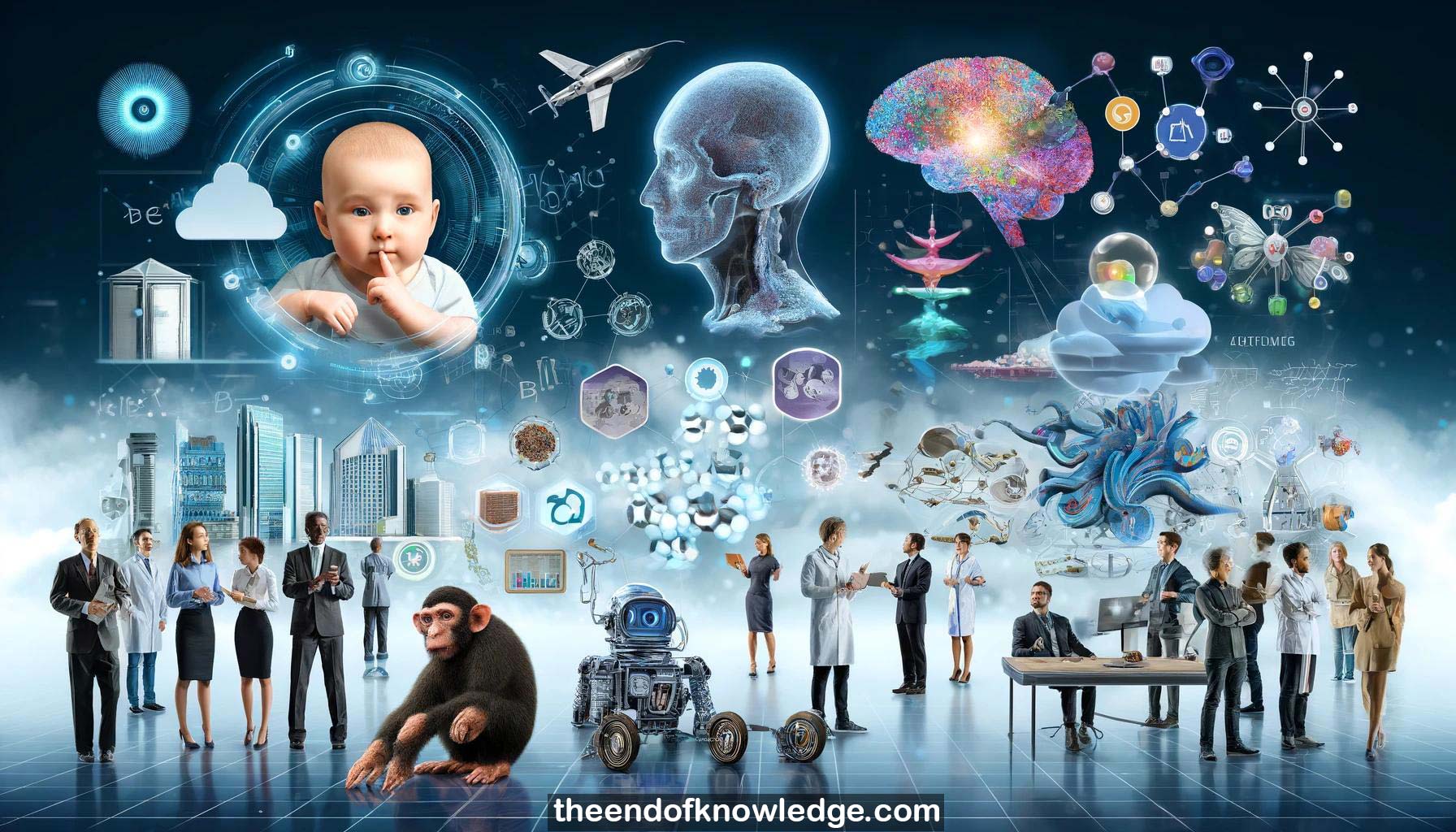 >
>
Concept Graph & Resume using Claude 3 Opus | Chat GPT4 | Gemini Adv | Llama 3:
Resume:
1.-Noah Goodman discusses how humans learn vast amounts of knowledge from limited information, unlike other primates.
2.-Early psychological studies showed concept learning involves graded judgments and typicality effects, not just logical processes.
3.-A Bayesian learning model with a language of thought representation can explain many human concept learning experiments well.
4.-The cultural ratchet theory proposes knowledge is transmitted across generations, allowing humanity to accumulate knowledge over time.
5.-Goodman hypothesizes the cultural ratchet relies on language constructs for conveying generalizations, like quantifiers and generics.
6.-In experiments, language was sufficient and efficient for transmitting concepts between people compared to learning from examples.
7.-When conveying concepts, people relied heavily on generic language constructs as opposed to concrete referential language.
8.-Modern language models performed similarly to humans in learning concepts from the language used in the experiments.
9.-Generic language was much more common when people conveyed concepts compared to concrete reference games.
10.-Reference games provide a rich source of grounded, compositional language data that enables strong transfer learning in models.
11.-Goodman hypothesizes the cultural ratchet arises specifically from language constructs that directly convey generalizations.
12.-Generics are easy to understand but difficult to formally define, as their interpretations vary based on the property.
13.-Two potential interpretations of generics are as a minimal example or a socially intended minimal example chosen by a teacher.
14.-Prior expectations about feature prevalence differ across properties, influencing the interpretation of corresponding generic statements.
15.-A Bayesian model incorporating socially intended examples and prior knowledge explains human interpretations and endorsements of generic statements well.
16.-Learning from language regularizes and prepares learners for future learning from both language and examples.
17.-Incorporating an auxiliary task of decoding language descriptions improves the performance and data efficiency of meta-learning models.
18.-Language helps reject irrelevant features and regularizes learning, especially in the "sweet spot" with enough but not abundant data.
19.-The cultural ratchet allows humanity to accumulate knowledge over generations, with language facilitating transmission and future learning.
20.-Generics appear very early in child-directed speech and children's own productions, before other forms of generalization like quantifiers.
21.-Goodman is agnostic about the necessity of logical representations, acknowledging the potential of vector-based representations with sufficient power.
22.-Learning from language is relevant regardless of the specific representational format, as demonstrated by the success of neural network models.
23.-The importance of learning from language likely depends on the task, with some requiring extensive embodied experience before language becomes meaningful.
24.-Language is particularly powerful for transmitting abstract, causal, and high-level knowledge that is difficult to discover through direct experience alone.
25.-There is an open question regarding the division of labor between perception and language in children's acquisition of high-level concepts.
26.-Grounded, concrete language understanding is a prerequisite for learning abstractions from generics and other linguistic constructs.
27.-The semantic framework used for category generics also applies well to causal and habitual generics, with some syntactic variations.
28.-Procedural knowledge that generalizes across event scenarios may involve similar linguistic structures to those used for conveying generic information.
29.-Goodman's research aims to understand the gap between human and animal learning that enables humans to build complex technological societies.
30.-The cultural ratchet, driven by language's ability to convey generalizations, is proposed as a key factor in humans' remarkable learning abilities.
Knowledge Vault built byDavid Vivancos 2024